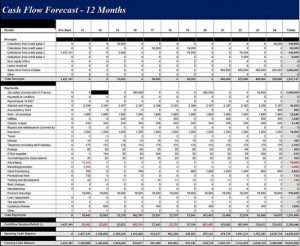The Buyer’s Magic Number
Reaching into my magic hat… Presto… we’ve got the buyer’s magic number. No sleight of hand tricks here. The buyer must buy the property for no more than $2,125,000. This is the amount that pays off the seller’s mortgage or assumes it, gives him/her $625,000 in equity at closing and yields 8 percent to the buyer. Taking the $200,000 NOI and dividing it by the $2,125,000 purchase price means that the buyer wants to purchase the property at a 9.41 percent cap rate at its lowest. Any asking cap rate that’s lower than that and the property value increases, the amount of equity increases and with a fixed net operating income, the cash flow return must decline. The return for the buyer drops below the target return on equity. The deal doesn’t get done from the buyer’s perspective.
 We’ve also quantified another useful relationship. We can determine what return on investment the seller is offering. Let’s say that the seller is asking $3.1 million. If we take off the mortgage balance of $1.5 million, that’s $1.6 million of equity. If we divide the $50,000 before cash tax flow amount by the $1.6 million equity portion of the deal, that means that the owner is offering a 3.13 percent return if the property were purchased for $3.1 million. That’s much less than the required 8 percent. That’s barely more of a return than putting their equity in a savings account. That’s a small return for a large loss of liquidity!
We’ve also quantified another useful relationship. We can determine what return on investment the seller is offering. Let’s say that the seller is asking $3.1 million. If we take off the mortgage balance of $1.5 million, that’s $1.6 million of equity. If we divide the $50,000 before cash tax flow amount by the $1.6 million equity portion of the deal, that means that the owner is offering a 3.13 percent return if the property were purchased for $3.1 million. That’s much less than the required 8 percent. That’s barely more of a return than putting their equity in a savings account. That’s a small return for a large loss of liquidity!
The Seller’s Magic Number
Let’s see the seller’s side of the deal. Reaching into my magic hat again… Presto! The reason why the price is so high becomes obvious. With a positive net operating income, a positive cash flow and a loan-to-value ratio of less than 50 percent on the seller’s mortgage, what is the owner’s compulsion to sell at a lower price? There’s none that I can see.
Is this justified? Perhaps the seller believes any excess land is very valuable. Maybe their waterfront land is very valuable in the seller’s mind. Maybe the books are only showing $200,000 net operating income but it’s generating much more. It doesn’t matter much what the explanation is. The owner is under no compulsion to offer the property for an equity return higher than 3.13 percent. Pass this deal up!
In Part 3 I’ll get into the last piece of the puzzle.

